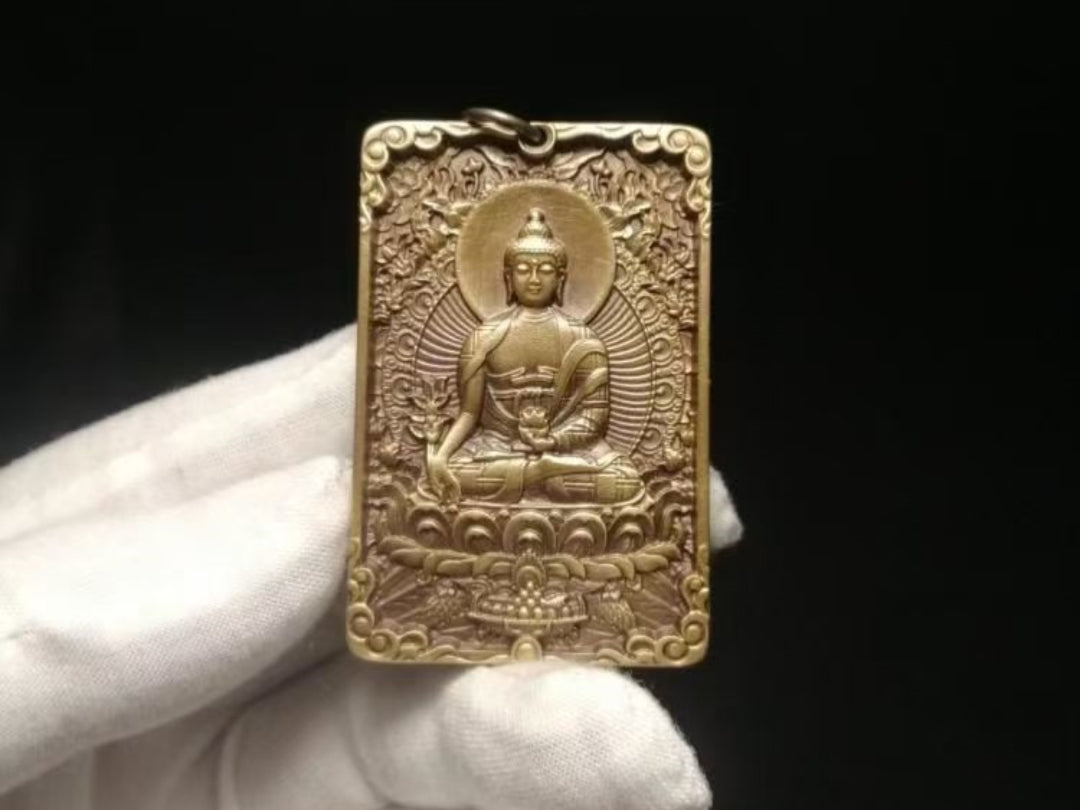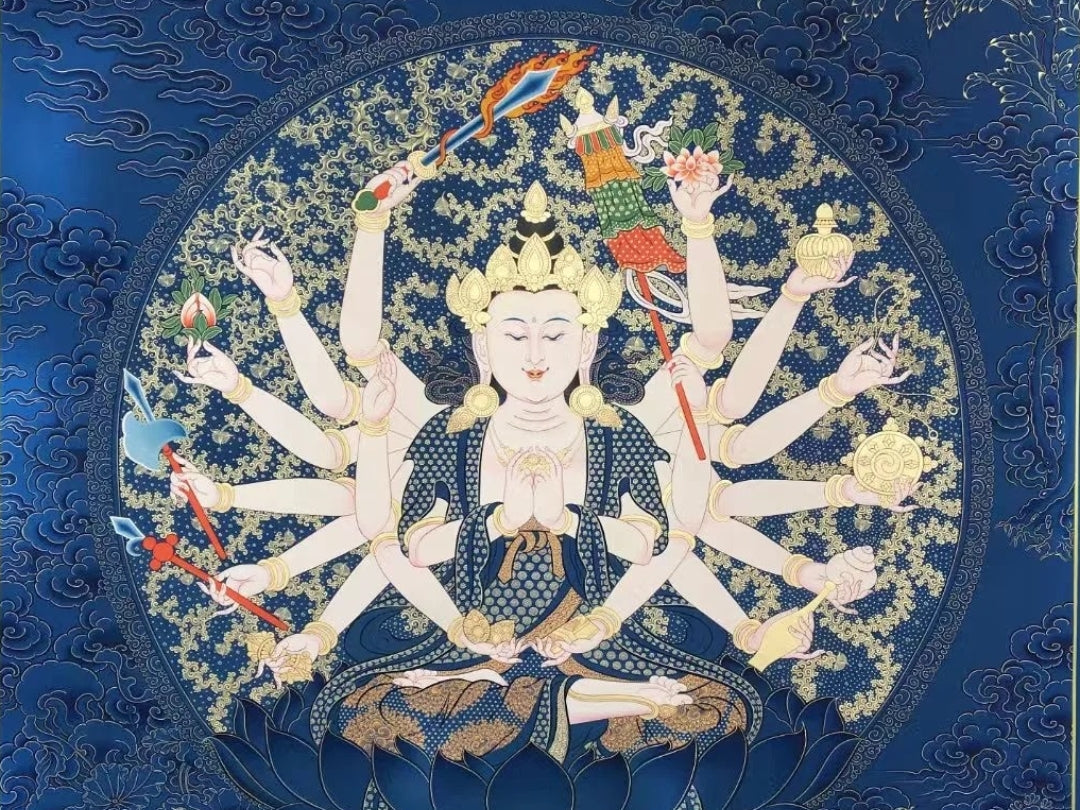Among the fierce guardians of Tibetan Buddhism, Ucchusma—the wrathful emanation of Śākyamuni Buddha at his Parinirvana—stands out for his fiery presence and unwavering vow to uphold the Dharma. With the power to purify defilements and shield practitioners from both visible and invisible obstacles, Ucchusma embodies the perfect fusion of compassion and strength.

A Legendary Emergence at the Buddha’s Passing
In Kusinagara, just before the Buddha’s final passing, deities, monks, and lay devotees gathered beneath twin sal trees. As sorrow filled the air, the demonic king Lodzhi Brahma refused to pay respects, instead engaging in licentious revelry that defiled the sacred moment.
Repeated attempts by celestial beings to summon him failed—ritual chants collapsed beneath his impurity. Moved by compassion, the Buddha manifested Ucchusma from his left heart. Dark blue-black in body, three-headed, nine-eyed, and eight-armed, with upward-flaring red hair and a halo of flames, Ucchusma declared his power to purify and protect.
With cosmic might, he shook the ground across three thousand worlds, collapsed palaces of gods and dragons, then soared to Brahma’s realm. A single pointed finger transformed Brahma’s unclean retinue into earth and compelled the king himself to bow at the Buddha’s bier—affirming Ucchusma’s role as the supreme purifier.
Iconography: Wrathful Compassion Made Manifest
Ucchusma’s terrifying form carries layers of symbolic meaning:
-
Three Heads & Nine Eyes: Penetrate past, present, and future obscurations.
-
Eight Arms: Wield six tantric implements and two mudras—fire wheel to burn karmic obstacles, vajra for unbreakable resolve, noose to bind delusions, bell echoing emptiness, trident cutting the three poisons, sword slicing conceptual clinging, plus gestures of teaching (vitarka) and protection (abhaya).
-
Red Flame Aura: Symbolizes fierce compassion that dispels impurities.
-
Eight Dragons: Coil around his arms, representing mastery over inner “demons” and worldly hardships.
Though wrathful in appearance, Ucchusma’s actions flow from mahā-karuṇā, the great compassion that dissolves defilements to protect and uplift all beings.

The Ucchusma Mantra: Purify and Protect
Ucchusma promised that any being oppressed by demons or spiritual stains who recites his mantra one hundred thousand times will receive his personal intervention and lifelong safeguarding:
“Oṃ Hūṃ Hūṃ Vajra Jvala-chih Hūṃ Phaṭ”
Daily recitation—ideally combined with visualization of Ucchusma’s radiant form—purifies karmic stains, disperses fear, and fortifies one’s commitment to the Dharma. For modern practitioners facing stress or negativity, this practice serves as both shield and catalyst for inner transformation.
Ucchusma in Daily Practice
-
Morning Invocation
Light incense, bow three times toward your altar, and recite the mantra 21 times to invite Ucchusma’s protective energy into your day. -
Midday Purification
During breaks, silently chant while visualizing flames dissolving inner tension—letting each syllable burn away doubt and distraction. -
Evening Reflection
Offer gratitude with a final set of mantra recitations, dedicating merit to all beings in need of cleansing and upliftment.
Over time, practitioners report greater mental clarity, resilience against adversity, and a profound sense of being held by an indestructible compassion.

Modern Relevance: Invoking an Ancient Protector
In today’s fast-paced world, Ucchusma remains a timeless ally. His vow—to protect the Dharma and its followers even after the Buddha’s passing—echoes in lives seeking unwavering support. By embracing his mantra and reflecting on his iconography, we tap into a wellspring of wrathful compassion, turning life’s challenges into opportunities for growth.
At QiLing Aura, we honor this powerful tradition with Tibetan protector deity pendants inspired by Ucchusma’s form. Crafted in sterling silver with dark patina and red enamel accents, these amulets serve as daily reminders of his purifying presence—an elegant fusion of ancient Buddhist dharma protector symbolism and modern design.




